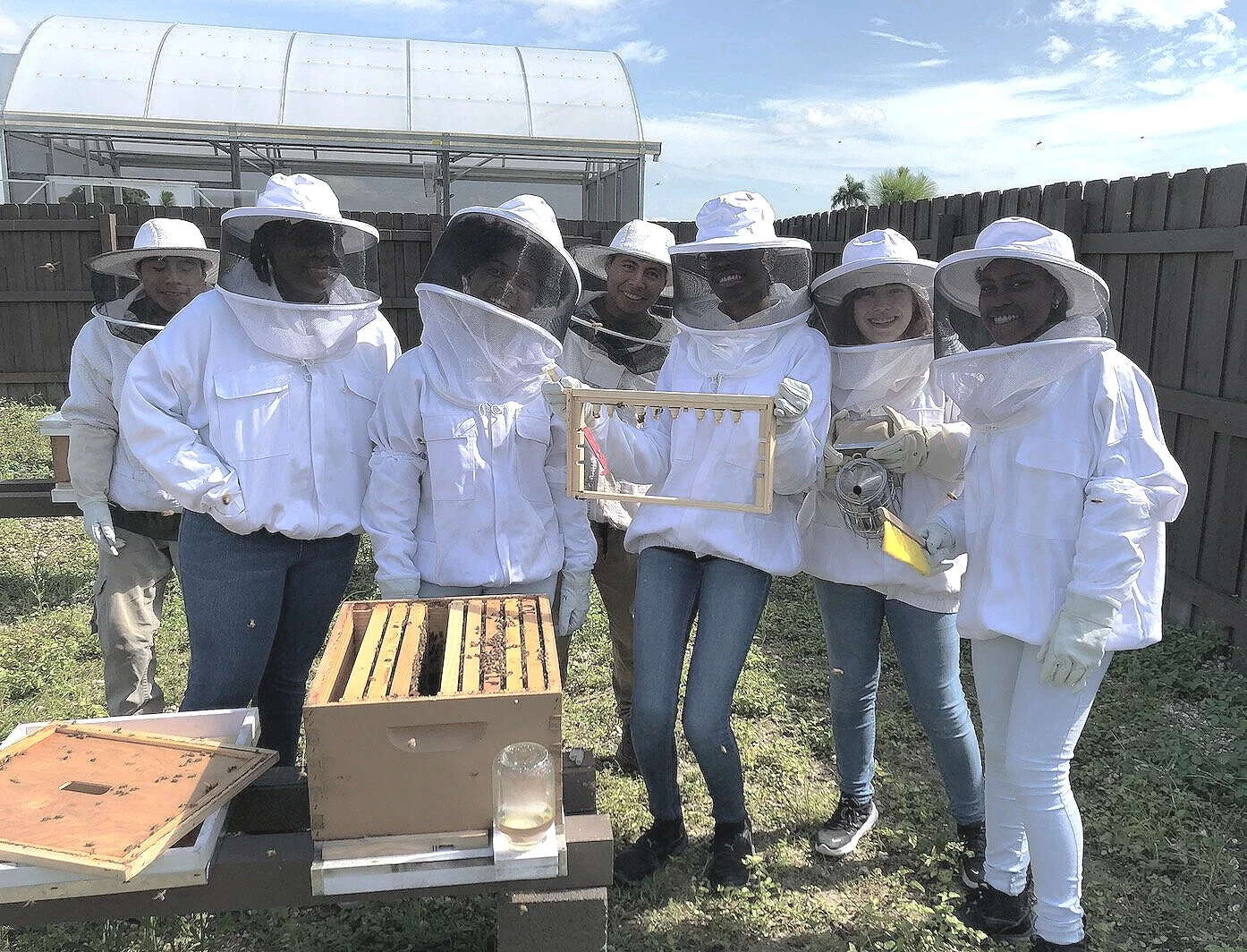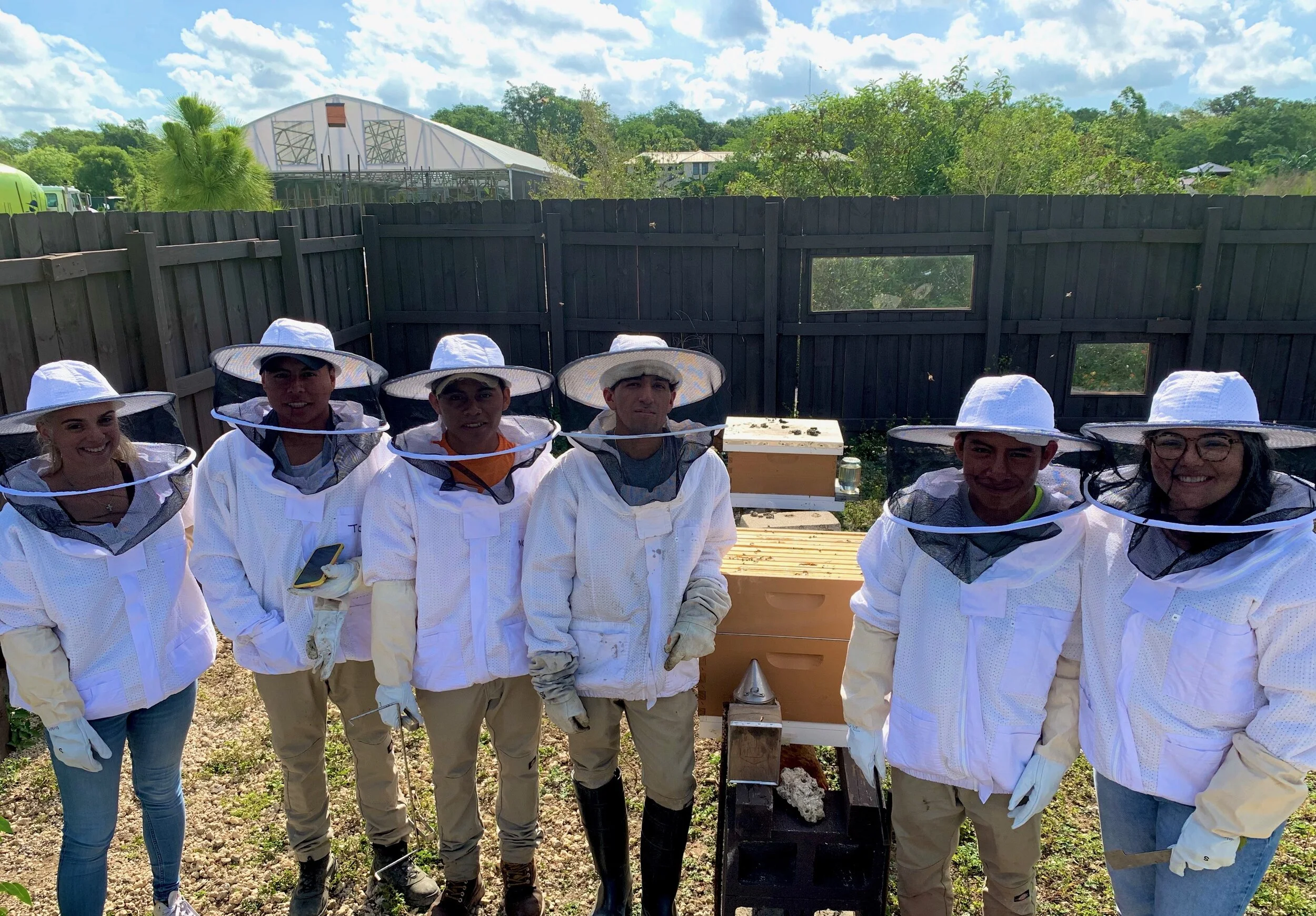Bees Make Everything Better
Let’s get Beezy!
Are you interested in supporting our environmental sustainability work to increase the South Florida pollinator population while supporting GEN2050 youth STEAM education?
It’s easy, just hit the link below to be a contributor not only for creating a healthier ecosystem but also providing a platform for youth to engage with hands on experience in our apiary.
GEN2050 and Patch of Heaven Sanctuary
At our open air lab, young people learn the basic sciences behind urban gardening and urban beekeeping, and how their actions are intersecting with global environmental conservation efforts.
Why Are Bees Important?
Here’s some interesting info from the U.S. Geological Survey:
There are nearly 20,000 known bee species in the world, and 4,000 of them are native to the United States (an estimated 400 additional native bee species remain to be identified in the U.S.). From the tiny and solitary Perdita minima, known as the world’s smallest bee, to the large carpenter bee, to the brilliant blue of the mason bee; native bees come in a variety of shapes, sizes and colors.
Native bees pollinate native plants like cherries, blueberries, and cranberries, and were here long before European honeybees were brought to the country by settlers (honeybees are not native to North America). Honeybees, of course, are well known for pollinating almond and lemon trees, okra, papaya and watermelon plants. But native bees like the blue orchard bees are better and more efficient pollinators of native crops. Native bees are estimated to pollinate 80 percent of flowering plants around the world.
According to the United States Department of Agriculture (USDA), bees of all sorts pollinate approximately 75 percent of the fruits, nuts and vegetables grown in the United States, and one out of every four bites of food people take is courtesy of bee pollination. In sum, bee pollination is responsible for more than $15 billion in increased crop value each year.



